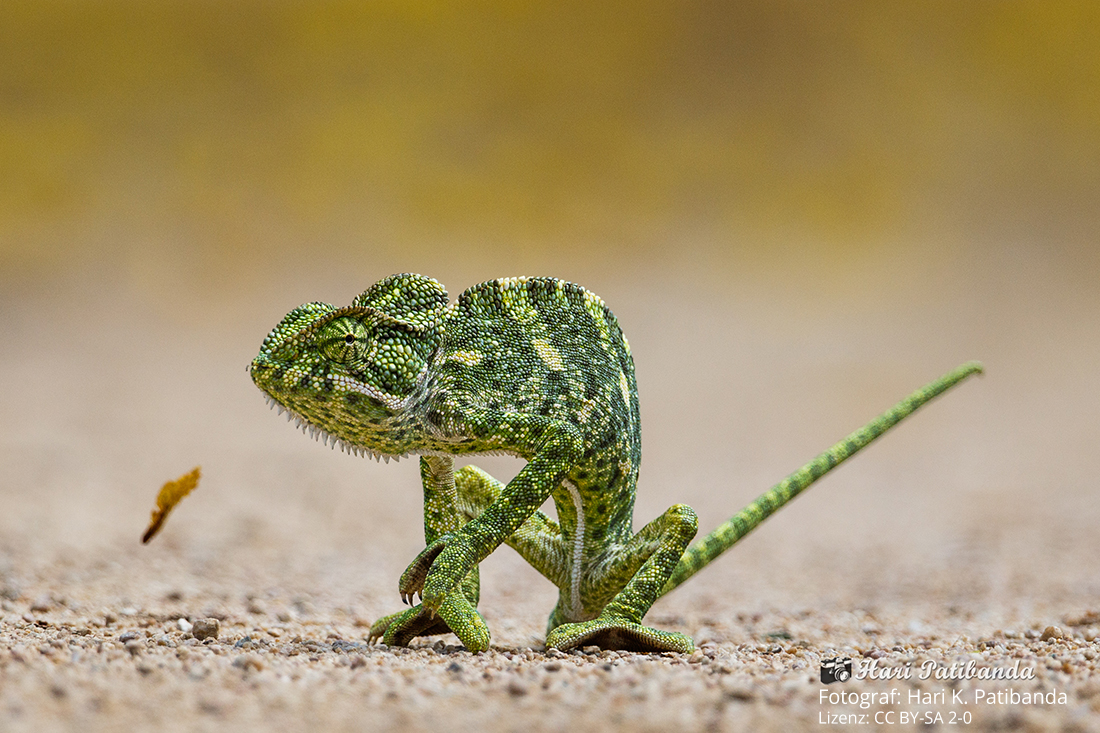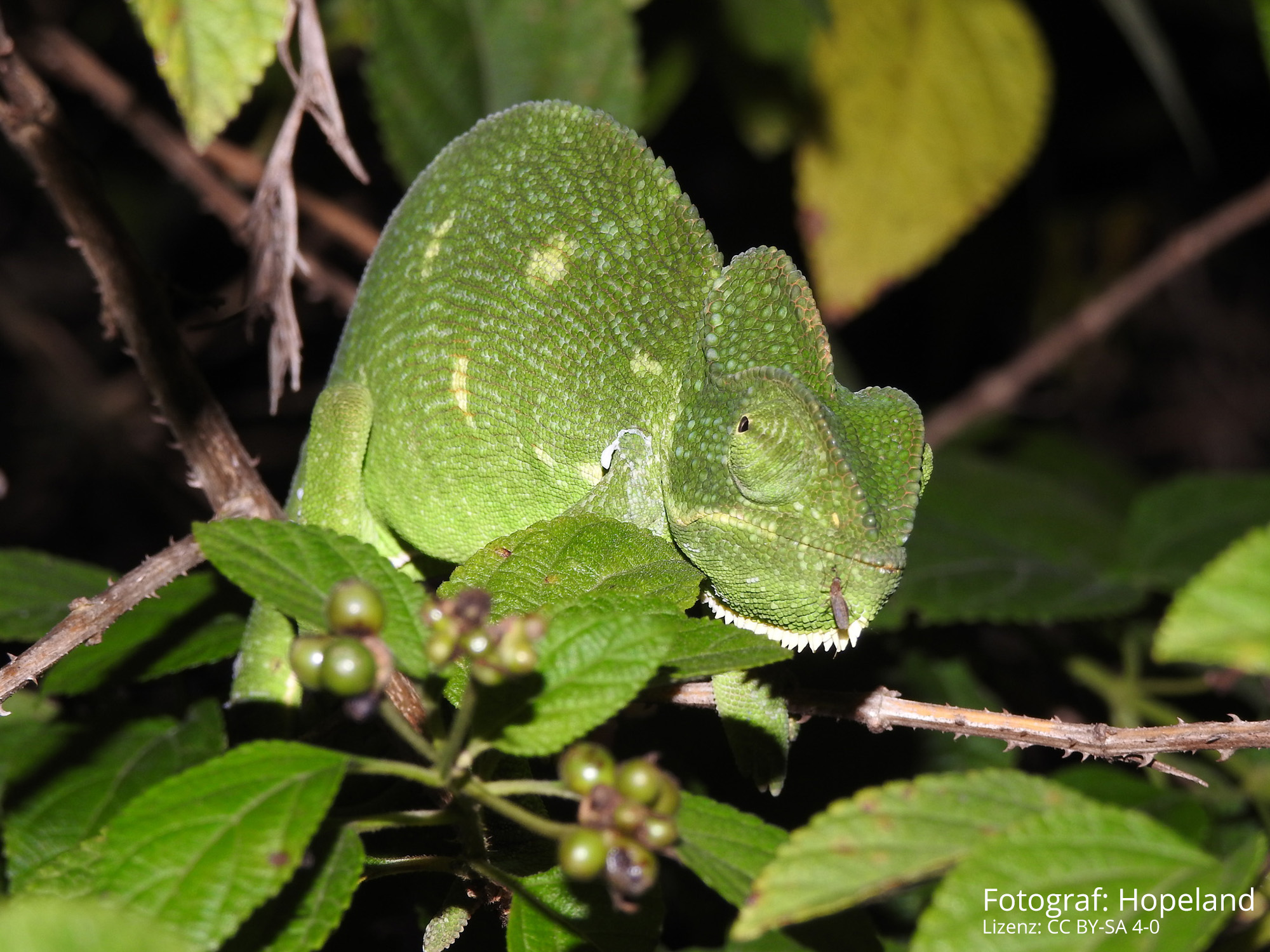A small publication recently focussed on observations of chameleons in India. Four researchers were travelling in the state of Karnataka in India and repeatedly observed chameleons at night. On a good 20 occasions, they observed single sleeping animals. However, two observations stood out from the others.
In July 2021, they observed two Chamaeleo zeylanicus sleeping less than five centimetres apart on the same branch in Narasimha Betta. A similar picture presented itself to them a little later in July of the same year in Devarayana Durga, 53 km away from the first observation. The chameleons were located in well vegetated hilly scrubland interspersed with rocks.
Unfortunately, the authors were unable to determine the sexes of the animals. As the observations were both made during the monsoon, the reproductive season of the Indian chameleon, they assume mate guarding. This involves a male ‘guarding’ a mated female for several days in order to increase his reproductive success.
Co-Sleeping in the Indian Chameleon Chamaeleo zeylanicus Laurenti, 1768
Nitya P. Mohanty, Krishna Murthy, B.R. Ansil, Ashwin Viswanathan
Herpetology Notes 2024, 17: 679-681.
DOI: not available
Photo: Sleeping Chamaeleo zeylanicus, photographed byDr. Raju Kasambe, Creative Commons Attribution-Share Alike 4.0 International





